S'attaquer à de grands motifs de broderie avec des appliqués peut être un moyen fantastique de faire preuve d'audace., des pièces accrocheuses sans surcharger votre tissu. Applique vous aide à ajouter gros, zones colorées tout en gardant une densité de point gérable, ce qui est un vrai plus pour les grands projets.
Dans ce guide, I’;Je vais vous montrer comment numériser étape par étape, breaking down each part so it’;c'est simple à suivre. Que vous recherchiez une finition lisse ou que vous souhaitiez expérimenter des textures, ces conseils vous permettront de donner vie facilement à vos grands motifs avec des appliques.
Prêt à faire preuve de créativité? Commençons!
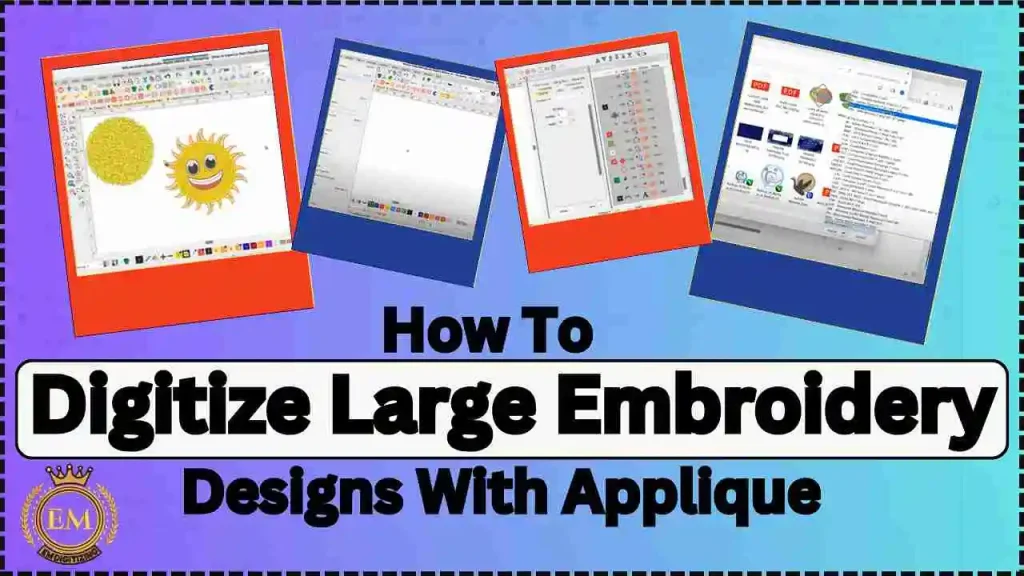
Comment numériser de grands motifs de broderie avec des appliques?
Logiciel recommandé pour numériser de grands motifs de broderie avec appliques
Voici quelques options logicielles populaires pour créer de grands designs avec des appliques:
- Numériseur de broderie de trappe
- Les essentiels d'Embrilliance
- Floriani Contrôle Total U
- Frère Simplement Appliqué
- Encre/Point
1. Numériseur de broderie de trappe
Éclore Numériseur de broderie est un logiciel polyvalent connu pour son interface conviviale et ses puissantes fonctionnalités d'application, ce qui le rend fortement recommandé pour les grandes conceptions d'appliques. Il permet aux utilisateurs de créer des appliques complexes avec des outils faciles à utiliser, garantissant que même les plus complexes, les grandes conceptions maintiennent une précision de haute qualité. Les options d'édition avancées et la prise en charge de plusieurs cerceaux le rendent parfait pour les projets d'appliques à grande échelle, permettant aux utilisateurs de gérer chaque section avec précision.
Avantages:
- Outils avancés de création d'appliques, parfait pour gérer de grands designs.
- Contrôle de précision avec options d'édition simples pour les grandes surfaces.
- Prend en charge plusieurs formats de fichiers pour une variété de machines à broder.
Limites:
- Nécessite un achat unique, ce qui peut être coûteux pour les débutants.
- Configuration système élevée pour exécuter le logiciel en douceur.
2. Les essentiels d'Embrilliance
Embrilliance Essentials simplifie le processus de broderie, ce qui le rend idéal pour les débutants et les utilisateurs avancés. Ses fonctionnalités d'applique sont particulièrement bénéfiques pour broderie de grands motifs, permettant aux utilisateurs de décomposer et d'ajuster facilement les sections. La compatibilité multi-cerceaux garantit que même les designs surdimensionnés peuvent être créés de manière transparente, ce qui fait de ce logiciel un choix incontournable pour ceux qui travaillent sur de grands projets d'appliques.
Avantages:
- Abordable avec une interface conviviale.
- Compatible avec Mac et Windows, offrant de la flexibilité.
- Prend en charge plusieurs tailles de cerceau, idéal pour les grands designs.
Limites:
- Outils d’édition avancés limités par rapport aux logiciels premium.
- Certaines fonctionnalités peuvent nécessiter des modules complémentaires pour une fonctionnalité complète.
3. Floriani Contrôle Total U
Floriani Total Control U est un logiciel de qualité professionnelle, offrant un contrôle étendu sur la numérisation des appliques, ce qui est essentiel pour les conceptions à grande échelle. Son ensemble d'outils complet comprend la personnalisation des points et des options de superposition précises, permettant un travail d'applique détaillé et complexe qui reste propre et organisé en grands motifs. La précision et les capacités étendues de ce logiciel le rendent idéal pour les utilisateurs souhaitant obtenir une sortie de qualité professionnelle sur des projets plus importants..
Avantages:
- Outils de qualité professionnelle pour des conceptions d'appliques détaillées.
- Permet la personnalisation des points, ce qui le rend adapté aux conceptions complexes.
- Offre une assistance complète et des ressources de formation.
Limites:
- Cher, souvent destiné aux utilisateurs expérimentés.
- Courbe d'apprentissage plus raide par rapport à d'autres logiciels.
4. Frère Simplement Appliqué
Brother Simply Appliqué est spécialement conçu pour les projets d'appliques, offrir une expérience simplifiée aux utilisateurs. Les outils spécialisés de ce logiciel simplifient le processus d'application, permettant aux utilisateurs de gérer de grands motifs de broderie machine sans connaissances techniques approfondies. Sa compatibilité avec Machines à broder Brother assure une intégration fluide, ce qui en fait un choix pratique et efficace pour gérer de grandes conceptions d'appliques.
Avantages:
- Interface facile à utiliser conçue pour les appliques.
- Compatible avec les machines à broder Brother, assurer une intégration fluide.
- Abordable et accessible aux débutants et aux professionnels.
Limites:
- Fonctionnalités limitées en dehors des outils spécifiques aux applications.
- Principalement conçu pour les machines Brother, ce qui peut limiter la compatibilité.
5. Encre/Point
Ink/Stitch est gratuit, logiciel de broderie open source intégré à Inkscape, fournir des outils d'application robustes et efficaces pour les grandes conceptions. L'intégration avec Inkscape offre l'accès à un large éventail de fonctionnalités de conception, permettant aux utilisateurs de numériser de grands projets d'appliques avec flexibilité et contrôle. Le prix abordable et les puissantes capacités de conception d'Ink/Stitch en font un choix pratique pour ceux qui gèrent de grands projets d'appliques avec un budget limité..
Avantages:
- Libre et open-source, le rendre accessible à tous.
- Compatible avec Inkscape, fournir une gamme d'outils de conception.
- Mises à jour régulières et support communautaire.
Limites:
- Support technique limité car piloté par la communauté.
- Nécessite un peu de courbe d’apprentissage, Surtout pour les nouveaux utilisateurs.
Processus étape par étape de numérisation de motifs de broderie extra larges avec appliques dans Wilcom
Créer des motifs de broderie extra larges avec des appliqués dans Wilcom est simple grâce à une approche étape par étape.. Voici un guide pour vous aider à numériser de grandes conceptions en toute transparence.
1. Configuration de votre espace de travail
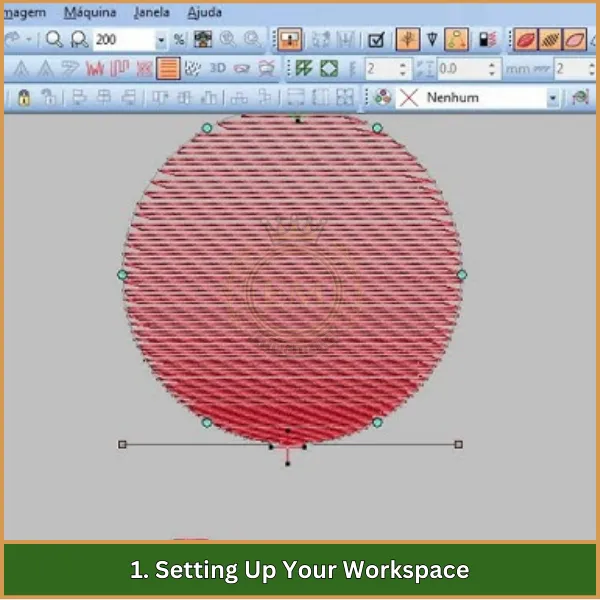
Commencez par lancer Wilcom et configurez votre espace de travail en fonction des dimensions de votre conception. Cela inclut le choix de la bonne taille de cerceau et la définition d'une grille pour un alignement plus facile., essentiel lorsque l'on travaille à numériser des motifs de broderie.
2. Importer le dessin
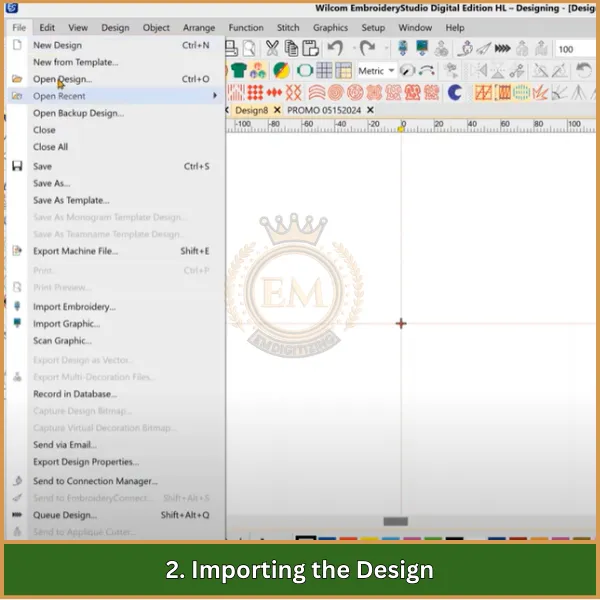
Importez l'image ou le fichier de conception que vous souhaitez numériser. Aller à File >; Insérer une image, puis ajustez le placement et la taille selon vos besoins pour l'adapter à votre espace de travail.
3. Définition des zones d'applique
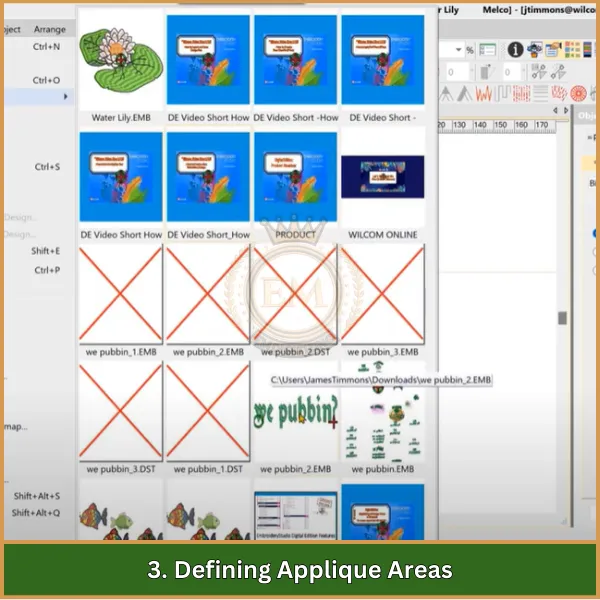
Sélectionnez l'outil Applique dans Wilcom pour délimiter les zones dans lesquelles vous souhaitez ajouter une applique.. Tracez soigneusement les sections et ajustez le type et la densité du point en fonction du tissu..
4. Choisir les types de points et les paramètres
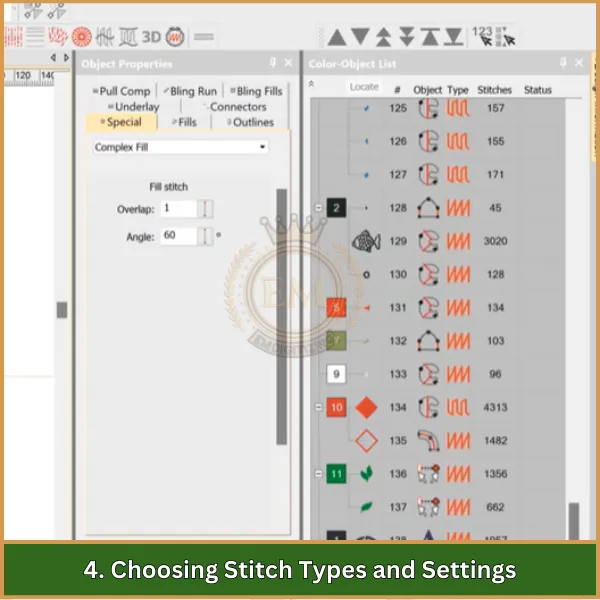
Pour chaque section d'applique, choisissez un type de point qui maintiendra le mieux le tissu appliqué en place. Ajustez les paramètres tels que la longueur et la densité du point pour plus de durabilité dans les motifs de broderie numérisés..
5. Ajout de points de placement et de pointage
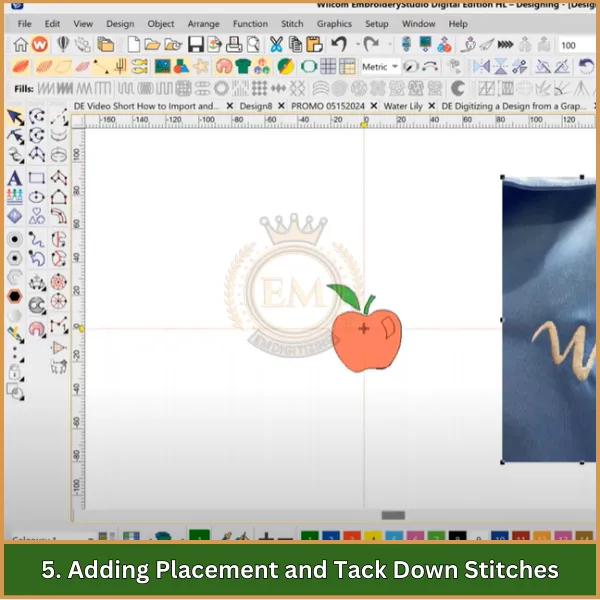
Le client est très content, procédures de contrôle renforcées. En tant que promoteur immobilier, peines, ni l'ullamcorper de la propriété, oreiller protéiné.
6. Aperçu de la conception
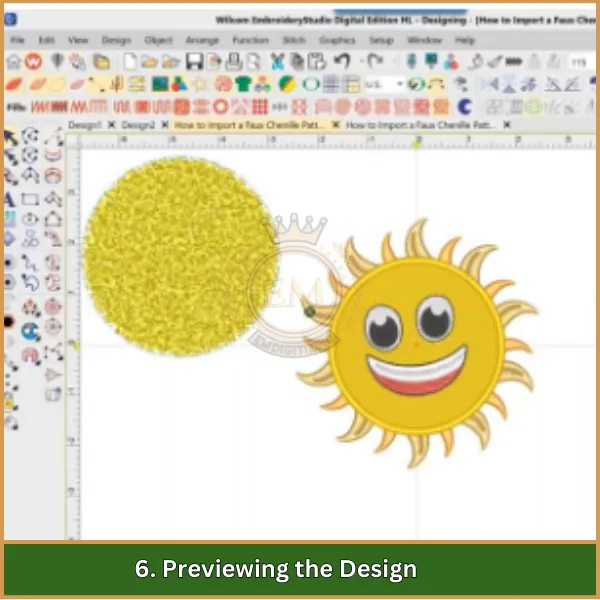
Utilisez l'outil d'aperçu pour vérifier à quoi ressemblera le motif une fois cousu.. Cela permet d'identifier tout problème de chevauchement de points, densité, ou alignement.
7. Enregistrement et exportation de la conception
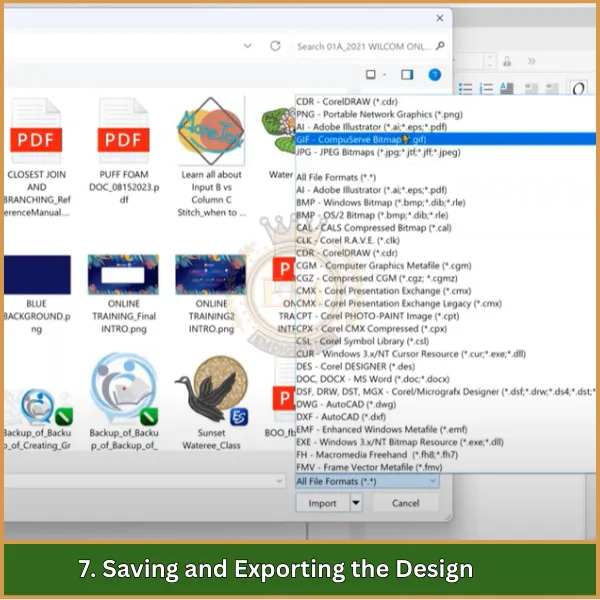
Une fois satisfait de l'aperçu, enregistrez le motif dans le format de fichier approprié pour votre machine à broder. Aller à File >; Enregistrer sous, sélectionnez le bon format, et enregistrez le fichier.
Conseils pour optimiser les grands designs avec Applique
- Décomposer les conceptions complexes en plus petites, sections gérables.
- Utilisez les paramètres multi-cerceaux pour accueillir des motifs de broderie extra-larges.
- Ajustez la densité des points pour éviter les plis du tissu.
- Ajoutez des points de sous-couche pour empêcher le tissu de bouger.
- Disposer les points pour réduire les coupes et les points de déplacement, gagner du temps de production.
- Aperçu avec True View pour vérifier la précision du design avant l'assemblage.
- Testez sur un tissu similaire pour garantir la qualité et effectuez des ajustements si nécessaire.
Conclure
Conclusion, numériser de grands motifs de broderie avec applique ne doit pas être une tâche complexe. Avec la bonne approche, vous pouvez réaliser un superbe, des résultats de qualité professionnelle. Si vous préférez confier la numérisation aux experts, EMDigitizing est là pour vous aider!
Nous proposons des services de numérisation de haute qualité à des prix abordables, et notre délai d'exécution ultra-rapide vous garantit de ne jamais manquer une date limite. Plus, nous proposons une option d'aperçu afin que vous puissiez voir votre conception avant qu'elle ne soit finalisée.
Et en guise de bienvenue aux nouveaux clients, profiter d'un 50% remise sur votre première commande. Laisser Numérisation EM donnez vie à votre vision de la broderie avec précision et soin!
